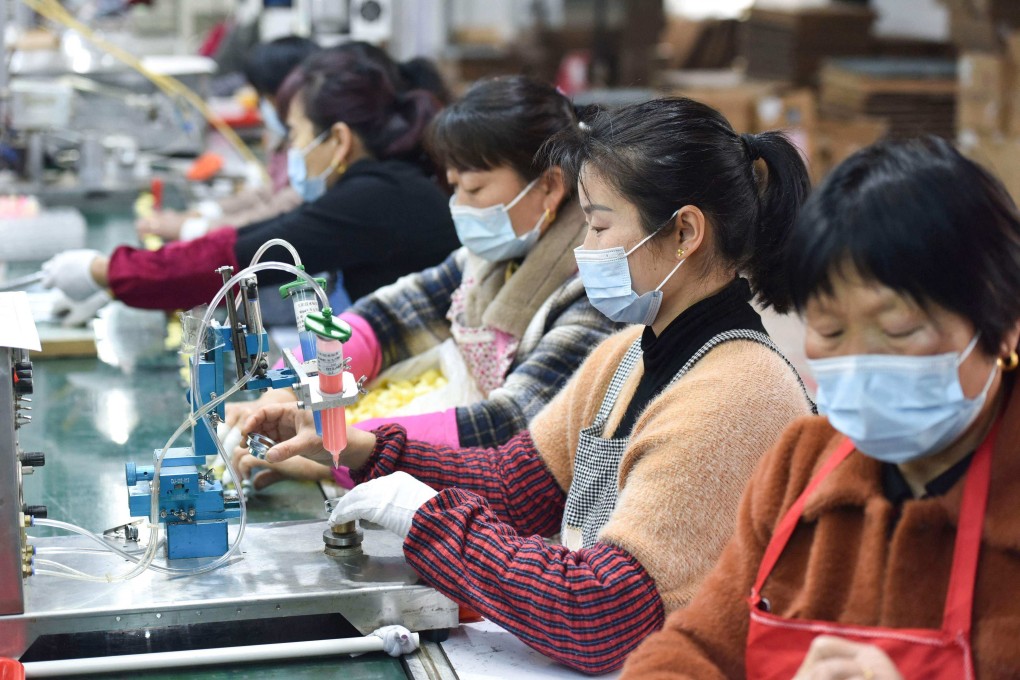Advertisement
China manufacturing activity contracts at sharpest rate in 2 years as ‘a variety of factors resonate’
- Caixin/Markit manufacturing purchasing managers’ index (PMI) fell to 48.1 in March from 50.4 in February
- On Thursday, China’s official manufacturing purchasing managers’ index (PMI) fell to 49.5 in March, down from 50.2 in February
Reading Time:3 minutes
Why you can trust SCMP
1

China’s factory activity slumped at the fastest pace in two years in March, as the domestic coronavirus resurgence and the economic fallout from the Ukraine war triggered sharp falls in production and demand, a business survey showed on Friday.
The Caixin/Markit manufacturing purchasing managers’ index (PMI) fell to 48.1 in March, indicating the steepest rate of contraction since February 2020, from 50.4 in the previous month.
The 50-point index mark separates growth from contraction on a monthly basis.
Advertisement
The deterioration in manufacturing conditions was broadly in line with the official PMI released on Thursday, which showed activity contracted at the quickest rate since October 2021.
Taken together with the official survey, they suggest the sharpest slowdown in industrial output since early 2020
“The Caixin manufacturing index fell under 50 last month as measures to contain the latest virus outbreak weighed heavily on industrial activity. Taken together with the official survey, they suggest the sharpest slowdown in industrial output since early 2020,” said Sheana Yue, China economist at Capital Economics.
Advertisement
Advertisement
Select Voice
Choose your listening speed
Get through articles 2x faster
1.25x
250 WPM
Slow
Average
Fast
1.25x